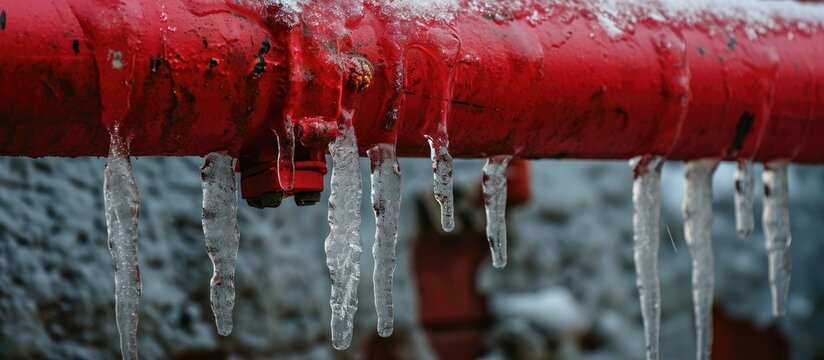Tips to Defend Your Pipes from Freezing: Specialist Advice
Tips to Defend Your Pipes from Freezing: Specialist Advice
Blog Article
The article in the next paragraphs pertaining to How to prepare your home plumbing for winter weather is fairly captivating. You should check this stuff out.

Cold weather can wreak havoc on your plumbing, particularly by freezing pipelines. Right here's just how to avoid it from happening and what to do if it does.
Introduction
As temperature levels decrease, the risk of icy pipes rises, potentially bring about expensive repair work and water damages. Understanding exactly how to stop frozen pipes is critical for house owners in chilly environments.
Comprehending Frozen Pipelines
What causes pipes to ice up?
Pipes ice up when revealed to temperature levels listed below 32 ° F (0 ° C) for prolonged periods. As water inside the pipes ices up, it broadens, putting pressure on the pipe walls and possibly triggering them to burst.
Risks and damages
Frozen pipelines can lead to water system disturbances, home damages, and costly repair work. Burst pipes can flooding homes and cause extensive architectural damage.
Signs of Frozen Water Lines
Determining frozen pipes early can avoid them from rupturing.
Just how to determine icy pipelines
Try to find lowered water circulation from faucets, unusual smells or sounds from pipelines, and noticeable frost on exposed pipes.
Avoidance Tips
Shielding at risk pipelines
Cover pipelines in insulation sleeves or utilize warm tape to safeguard them from freezing temperatures. Focus on pipes in unheated or exterior locations of the home.
Home heating methods
Keep interior rooms adequately warmed, specifically locations with pipes. Open up closet doors to enable warm air to distribute around pipelines under sinks.
Shielding Outdoor Pipes
Yard tubes and exterior taps
Detach and drain yard pipes before winter. Mount frost-proof faucets or cover outdoor taps with shielded caps.
What to Do If Your Pipes Freeze
Immediate activities to take
If you think icy pipes, maintain faucets open to soothe stress as the ice thaws. Use a hairdryer or towels taken in hot water to thaw pipelines gradually.
Long-Term Solutions
Structural changes
Consider rerouting pipelines far from outside walls or unheated areas. Add extra insulation to attic rooms, cellars, and crawl spaces.
Upgrading insulation
Buy high-grade insulation for pipelines, attic rooms, and wall surfaces. Correct insulation helps preserve consistent temperature levels and reduces the danger of frozen pipelines.
Conclusion
Stopping icy pipes requires proactive actions and quick feedbacks. By understanding the reasons, signs, and preventive measures, home owners can safeguard their plumbing during cold weather.
5 Ways to Prevent Frozen Pipes
Drain Outdoor Faucets and Disconnect Hoses
First, close the shut-off valve that controls the flow of water in the pipe to your outdoor faucet. Then, head outside to disconnect and drain your hose and open the outdoor faucet to allow the water to completely drain out of the line. Turn off the faucet when done. Finally, head back to the shut-off valve and drain the remaining water inside the pipe into a bucket or container. Additionally, if you have a home irrigation system, you should consider hiring an expert to clear the system of water each year.
Insulate Pipes
One of the best and most cost-effective methods for preventing frozen water pipes is to wrap your pipes with insulation. This is especially important for areas in your home that aren’t exposed to heat, such as an attic. We suggest using foam sleeves, which can typically be found at your local hardware store.
Keep Heat Running at 65
Your pipes are located inside your walls, and the temperature there is much colder than the rest of the house. To prevent your pipes from freezing, The Insurance Information Institute suggests that you keep your home heated to at least 65 degrees, even when traveling. You may want to invest in smart devices that can keep an eye on the temperature in your home while you’re away.
Leave Water Dripping
Moving water — even a small trickle — can prevent ice from forming inside your pipes. When freezing temps are imminent, start a drip of water from all faucets that serve exposed pipes. Leaving a few faucets running will also help relieve pressure inside the pipes and help prevent a rupture if the water inside freezes.
Open Cupboard Doors
Warm your kitchen and bathroom pipes by opening cupboards and vanities. You should also leave your interior doors ajar to help warm air circulate evenly throughout your home.

Hopefully you liked our excerpt about How to Prevent Your Pipes From Freezing. Thanks for taking the time to read through our blog post. In case you enjoyed reading our article please don't forget to pass it around. Thank you for going through it.
Visit My Website Report this page